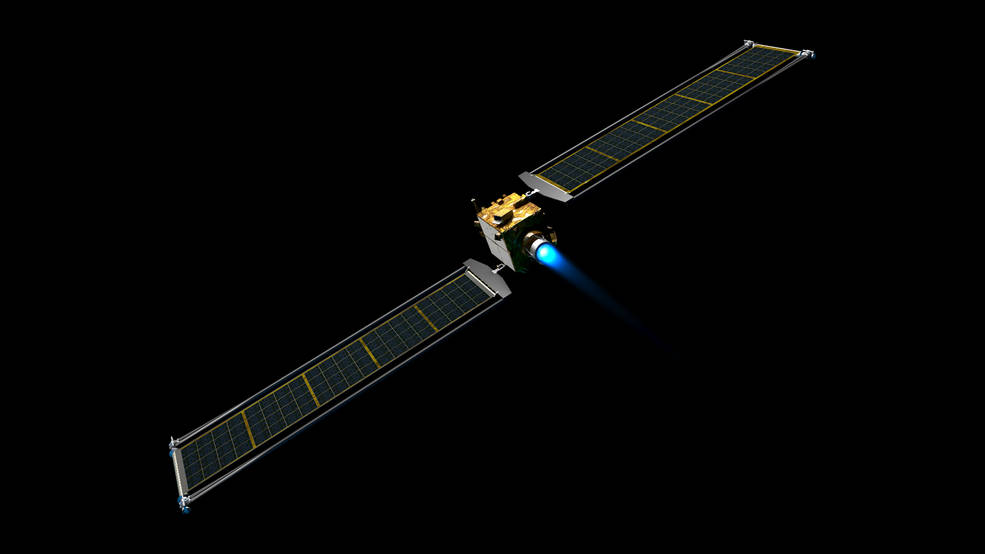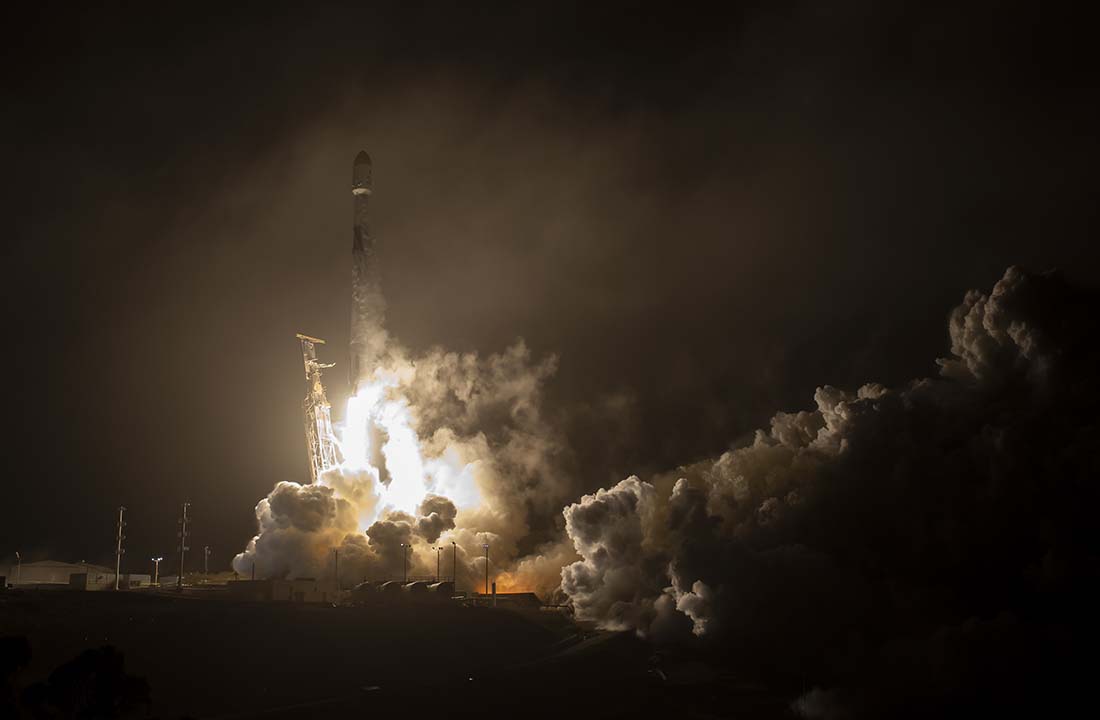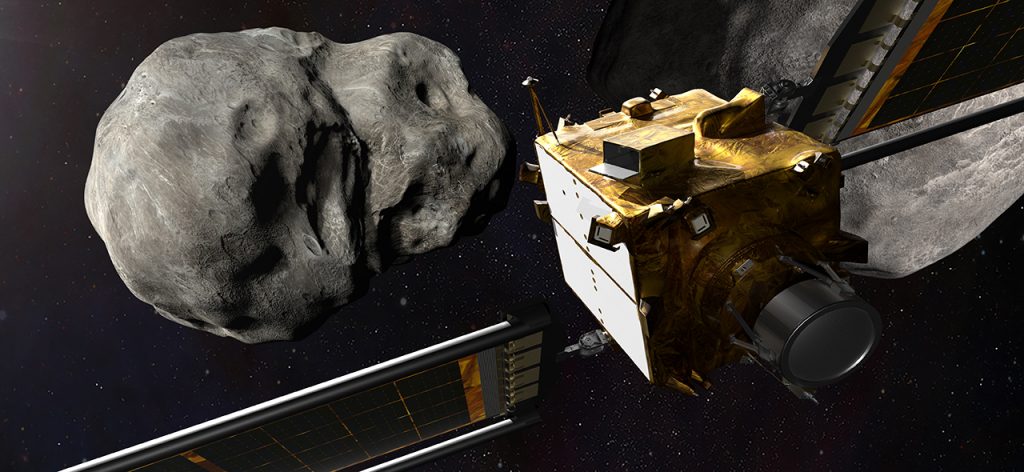NASA’s latest launch into outer space is going to make an impact. In fact, that’s its entire mission.
It’s all part of a long-term planetary defense strategy to avoid an “Armageddon” scenario, and NAU planetary scientist Cristina Thomas is part of the team studying this event.
DART (Double Asteroid Redirection Test), which launched on Nov. 23 out of Vandenberg Space Force Base in California, is NASA’s first test of a kinetic impactor. This mission will demonstrate asteroid deflection via kinetic impact. The goal is to collide with the target—in this case, the moon Dimorphos in the Didymos asteroid system—to see how the orbit changes. It’s a test run to understand how scientists could approach this problem should we find an asteroid on a collision course with Earth one day.
Thomas, an assistant professor of astronomy and planetary and lead of the DART Observations Working Group, was in California for the launch, which went as planned and the spacecraft is operating as expected. She and her international team have been working for years to obtain a precise pre-impact orbit of Dimorphos, the satellite asteroid, around Didymos, the primary asteroid in a near-Earth asteroid system.

Near-Earth, of course, is relative; the planet is in no danger from Didymos. However, an asteroid heading toward Earth is possible, and scientists throughout the world are working on ways to identify these potential threats and how to mitigate them. If this mission goes according to plan, this technique, called kinetic impact deflection, could be an important piece of a planetary defense system.
“DART is a critical next step for planetary defense,” Thomas said. “It is, on the surface, a simple test, but we will not completely understand what will happen until we do it.”
Using data from 2003, when the satellite was discovered, through early 2021, the working group has been able to precisely constrain the characteristics of the orbit and the position of Dimorphos in the orbit at the time of impact in fall 2022. They take repeated images of the same object, which shows dips in brightness when the satellite passes in front of or behind the primary. The timing of these brightness dips, called mutual events, allows the scientists to determine the orbital period of the satellite.
“This is essentially thinking of the satellite Dimorphos as a clock, which will return to its position in front of or behind Didymos at consistent intervals,” Thomas said. “Our working group will begin observations again in the months prior to the DART impact. We want to have the most complete picture of the current orbit before we change it through impact.”
The spacecraft has a long way to go before reaching the asteroids; Thomas said they expect a late September impact. Right now, the

team will finish a series of publications discussing what is known about the Didymos-Dimorphos system before impact. They’ll start observing again June to get a final look at the asteroids prior to impact. After impact, they’ll take a number of what is called lightcurve observations to measure the change in the orbital period of Dimorphos around Didymos.
That information allows them to compare this new orbital period after impact with what is known before impact to determine the amount of change. Her team also will do observations of the time of impact itself from a small number of observatories to see how much material is thrown off the surface and take the opportunity to do as much as possible to understand the objects such as taking spectra to further study the composition.
It’s an exciting opportunity for space exploration and the potential of this kind of interaction; this kind of mission has never been done before.
“On the surface, this is a fairly simple physics experiment, but the properties of the asteroid and how much material will be ejected from the surface will affect what happens during the impact,” Thomas said. “Our observations will tell us a lot of information that we need to know should we need to plan for a kinetic impactor in the future.”
Heidi Toth | NAU Communications
(928) 523-8737 | heidi.toth@nau.edu




